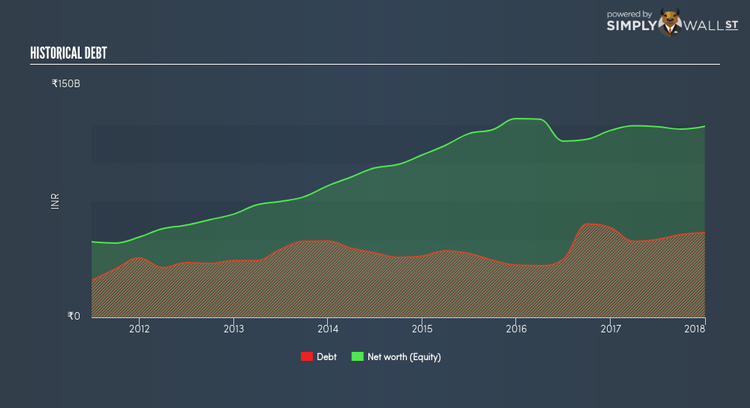What does Dr Reddy’s Laboratories Limited’s (NYSE:RDY) Balance Sheet Tell Us About Its Future?

Small and large cap stocks are widely popular for a variety of reasons, however, mid-cap companies such as Dr Reddy’s Laboratories Limited (NYSE:RDY), with a market cap of US$4.82B, often get neglected by retail investors. However, history shows that overlooked mid-cap companies have performed better on a risk-adjusted manner than the smaller and larger segment of the market. Let’s take a look at RDY’s debt concentration and assess their financial liquidity to get an idea of their ability to fund strategic acquisitions and grow through cyclical pressures. Note that this information is centred entirely on financial health and is a top-level understanding, so I encourage you to look further into RDY here. See our latest analysis for Dr. Reddy’s Laboratories
Does RDY generate enough cash through operations?
RDY has built up its total debt levels in the last twelve months, from ₹33.51B to ₹49.19B – this includes both the current and long-term debt. With this growth in debt, RDY’s cash and short-term investments stands at ₹18.14B for investing into the business. Additionally, RDY has generated ₹21.51B in operating cash flow over the same time period, resulting in an operating cash to total debt ratio of 43.74%, meaning that RDY’s operating cash is sufficient to cover its debt. This ratio can also be interpreted as a measure of efficiency as an alternative to return on assets. In RDY’s case, it is able to generate 0.44x cash from its debt capital.
Does RDY’s liquid assets cover its short-term commitments?
At the current liabilities level of ₹85.00B liabilities, it appears that the company has maintained a safe level of current assets to meet its obligations, with the current ratio last standing at 1.18x. Usually, for Pharmaceuticals companies, this is a suitable ratio since there’s sufficient cash cushion without leaving too much capital idle or in low-earning investments.
Does RDY face the risk of succumbing to its debt-load?
RDY is a relatively highly levered company with a debt-to-equity of 44.40%. This is not uncommon for a mid-cap company given that debt tends to be lower-cost and at times, more accessible. We can test if RDY’s debt levels are sustainable by measuring interest payments against earnings of a company. Ideally, earnings before interest and tax (EBIT) should cover net interest by at least three times. For RDY, the ratio of 52.33x suggests that interest is comfortably covered, which means that debtors may be willing to loan the company more money, giving RDY ample headroom to grow its debt facilities.
Next Steps:
Although RDY’s debt level is towards the higher end of the spectrum, its cash flow coverage seems adequate to meet obligations which means its debt is being efficiently utilised. This may mean this is an optimal capital structure for the business, given that it is also meeting its short-term commitment. Keep in mind I haven’t considered other factors such as how RDY has been performing in the past. You should continue to research Dr. Reddy’s Laboratories to get a better picture of the mid-cap by looking at:
Future Outlook: What are well-informed industry analysts predicting for RDY’s future growth? Take a look at our free research report of analyst consensus for RDY’s outlook.
Valuation: What is RDY worth today? Is the stock undervalued, even when its growth outlook is factored into its intrinsic value? The intrinsic value infographic in our free research report helps visualize whether RDY is currently mispriced by the market.
Other High-Performing Stocks: Are there other stocks that provide better prospects with proven track records? Explore our free list of these great stocks here.
To help readers see pass the short term volatility of the financial market, we aim to bring you a long-term focused research analysis purely driven by fundamental data. Note that our analysis does not factor in the latest price sensitive company announcements.
The author is an independent contributor and at the time of publication had no position in the stocks mentioned.

